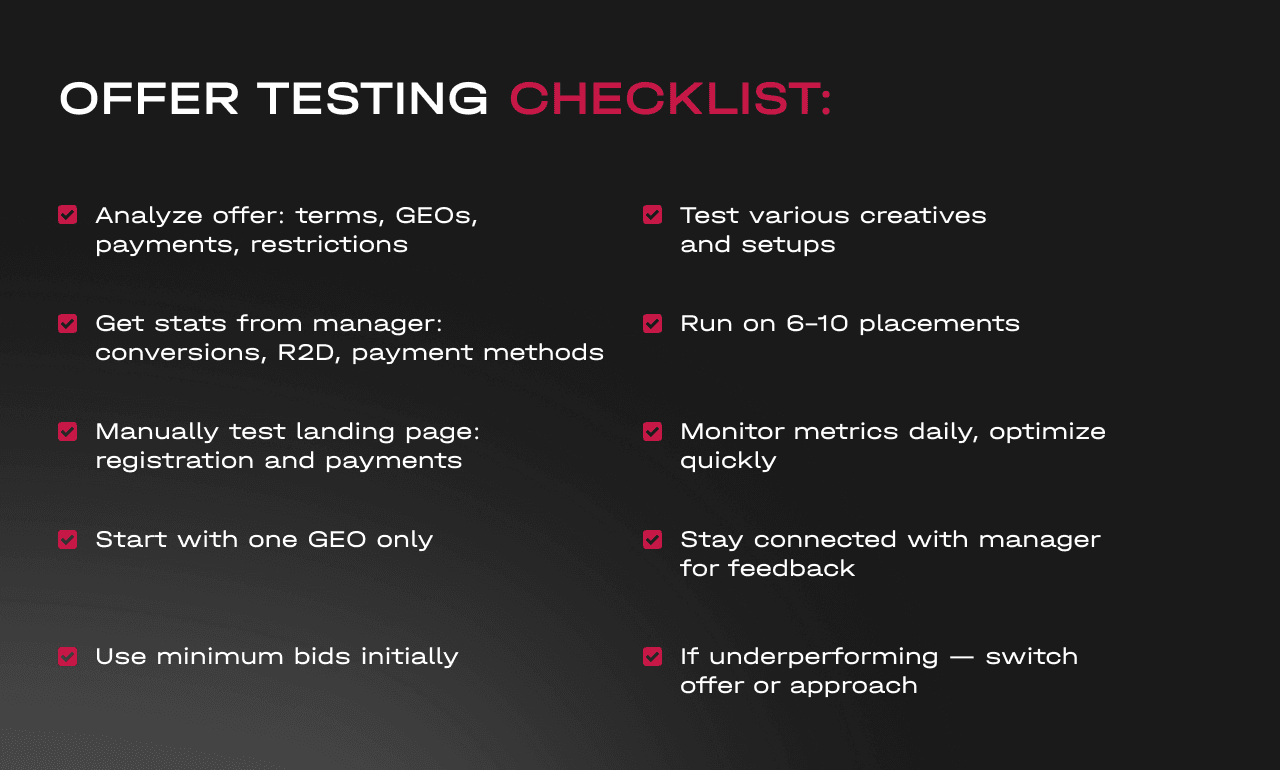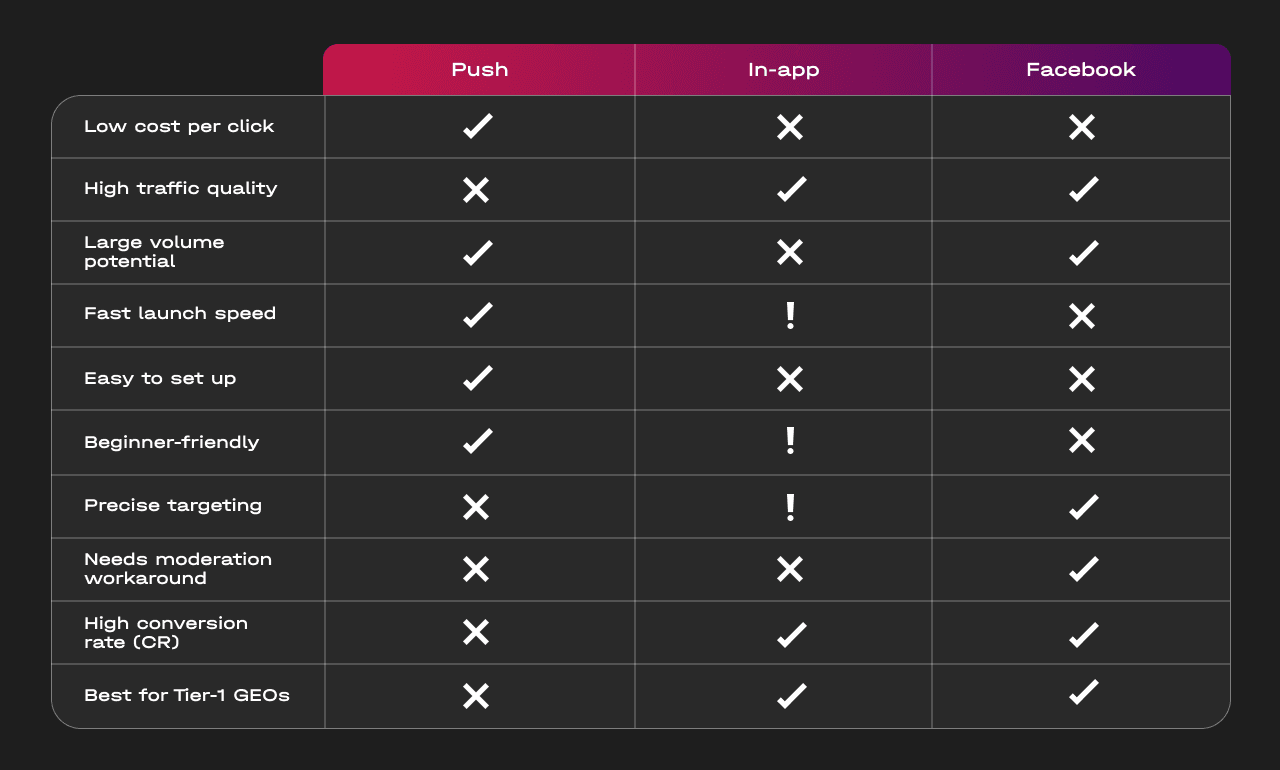Articles
Anti-Fraud in Affiliate Marketing: What It Is and Why You Need It
Anti-fraud systems have become a necessary tool for modern gambling businesses. Detecting and preventing fraud helps maintain profitability and a fair gaming environment.
Affiliate marketing lets you earn money by driving customers to different brands and companies online. You bring people through your links or ads, and if they complete a target action, you get paid. This action could be a registration, purchase, casino deposit, or application submission. Many beginners choose to try affiliate marketing — no product development needed, just drive traffic and get paid.
The affiliate model works across nearly all niches: gambling, sports betting, nutra (health products), finance, mobile apps, dating, and more. But it’s important to understand that not every ad brings results right away. Even if an offer looks attractive, there’s always a risk of burning your budget if you approach it blindly.

A common beginner mistake is throwing large sums of money into traffic without understanding how the offer works, who the audience is, and what restrictions apply. As a result, budgets get drained fast, and there’s no profit.
To avoid this, every affiliate needs to know how to properly run an affiliate test. Testing means checking how an offer performs on your specific traffic, which creatives and sources convert better, and under what conditions the setup becomes profitable.
In this guide, we’ll break down what an offer is, why testing is a must, and how to test efficiently to avoid wasting money and find working strategies that bring stable income.
An offer is a specific deal for users that allows you, as an affiliate, to earn money. In simple terms, it’s a combination of product + conditions + payout for results.
Put even more simply, an offer is what you promote. It can be anything — online casinos, sports betting, lottery.
Every offer usually includes:
A product or service you promote.
The payout model (for registration, deposit, purchase, etc.)
Minimum requirements for the user (for example, deposit amount or age limit).
Additional rules (restricted traffic sources, ad limitations, etc.)
Example: You find an offer from a partner network for “Casino X.” The terms are:
Minimum deposit: $10.
Only players from Canada are allowed.
You get $50 for each user who registers and deposits.
Paid ads from search engines are prohibited — only SEO or PPC allowed.
You start working with the offer, run ads, bring in users, and if they complete the required action (registration and deposit), you get paid.
Important: Even if an offer looks simple, it won’t always work equally well on all traffic sources. For example, the same casino offer might convert well on Facebook but fail on Push or SEO traffic. That’s why testing is crucial — you need to find the right traffic source and creative combination for each offer.
Offers come in different categories — casino, betting, lottery. Your choice depends on your experience and GEO knowledge.
Testing offers is the foundation of successful affiliate marketing. If you skip this step, you’ll likely waste your budget without understanding why there’s no profit. Testing is especially important if you’re new to affiliate marketing and still learning how a specific market works.
The goal of testing is to see how an offer performs with your traffic. Even if someone claims the offer converts well, that doesn’t guarantee results for you. Everything depends on your traffic source, audience, GEO, creatives, and landing pages.
Example: You run Facebook traffic to a casino offer. You get clicks and registrations but no deposits. Maybe your creatives aren’t engaging, the registration form is complicated, or the offer doesn’t support the right payment methods. Without testing, you won’t know the weak points.
That’s why affiliates start small — low budgets, small traffic volumes, minimal bids. This allows you to run an affiliate test on different combinations and quickly understand what works. If you see potential, scale up. If not, change the offer or adjust elements like creatives, landers, or GEO.
Testing isn’t a one-time thing. It’s a continuous process. The market evolves, audiences get bored, creatives burn out, and offers change. Without regular testing, you can’t expect stable earnings. Many people try affiliate marketing hoping for quick profits, but without understanding how offers work, it's easy to burn your budget.
This is why professionals always begin with small-scale tests instead of dumping big money into unproven campaigns. If you're new and want to try affiliate marketing, testing is the safest way to learn, avoid major losses, and build experience

Testing offers means checking how a specific offer converts with your traffic. In other words, you launch small traffic volumes and see if it brings registrations, deposits, and profit.
The main goal is to understand if the offer matches your audience and traffic source. Even if the product is good, the offer might not work because of the wrong GEO, weak creatives, or an ineffective landing page.
Testing helps you find winning combinations and eliminate what doesn’t work, so you don’t waste your budget. Only after successful testing can you safely scale campaigns and increase profit. Anyone who wants to seriously try affiliate marketing should start with small budgets and test every part of the setup step by step
Let’s break down eight key rules for testing offers:
Never drive traffic blindly. Always ask your affiliate manager for stats — conversion rates, reg-to-deposit ratio, payment methods. Test the landing page yourself, from a phone or desktop. There have been cases where the “Next” button didn’t work, so users couldn’t finish registration — but affiliates blamed the traffic.
It’s also important to check which payment options are available. If your target audience uses certain payment methods that the offer doesn’t support, conversions will be low even with good traffic.
Test One GEO First
Start with one market. For example, if the offer is for Canada, run an affiliate test on Canada only. Analyze results, review the data, and only then scale to other GEOs, new traffic sources, or creatives.
Launching everything at once is a mistake — you won’t know which element works and which burns the budget.
Launch Traffic with Minimum Bids
High budgets at the start are risky. You don’t know how the offer will behave yet — maybe the creatives or landing page won’t convert, or the audience won’t engage. Low bids help test reactions and conversions with minimal losses. Track clicks, registrations, and deposits from the beginning.
Once the setup shows stable results, you can safely increase volumes. But avoid wasting large amounts before that.
Scale When You See Potential
If the offer consistently brings registrations and deposits, gradually increase traffic. Do it step by step to control performance. If the offer shows weak results during testing, don’t delay — switch to another. Sometimes managers will suggest waiting, but stalling only wastes your time and money.
Test Different Creatives
It’s critical to rotate creatives, especially with paid social or teaser networks. Different triggers appeal to different users — some react to bonuses, others to low minimum deposits, others to fast payouts. Ask your affiliate manager for proven landing pages that already convert. This saves time and improves your results.
Test the Offer Across 6-10 Placements
Never judge an offer based on one test. It might convert differently across placements, formats, or GEOs. Start by testing the offer in 6-10 low ad positions or less competitive placements — different GEOs, creatives, traffic sources, but without risking top inventory. If the offer shows stable conversions on lower spots, scale it to higher positions or premium traffic.
Track Results and Optimize Fast
After launching, don’t just glance at general stats. Look at which specific elements bring results and which waste money. Check key metrics daily — clicks, registrations, FTDs (First Time Deposits), CPA (Cost Per Acquisition), CR (Conversion Rate). If conversions are weak or traffic burns your budget, take action immediately. Test new creatives, landers, or audiences. Sometimes changing the traffic source or bids fixes the issue.
The faster you react to weak performance, the less money you lose and the faster you find profitable combinations.
Stay in Touch with Your Manager
Your manager is your best information source. They know which GEOs convert, which payment systems work, and how the registration flow looks. Always ask for feedback on your traffic to avoid surprises — sometimes half of your leads get rejected, and you won’t know why without proper communication.
These eight rules will help you test offers properly, find your winning setups, and earn higher commissions.
Important: Your traffic source affects how you should test an offer. For example, if you drive SEO traffic with the keyword “$5 minimum deposit casino,” but the offer requires a $20 deposit — users won’t register, and you’ll get no conversions. Always make sure the offer matches your audience’s expectations.
With paid ads, the user isn’t actively searching for a casino — you’re showing them an offer in their feed. That’s why creatives, headlines, and offer representation are critical. For instance, you can test three casino ads: one highlighting fast payouts, another focusing on low deposit requirements, and the third promoting bonuses. You analyze which creative gets better results and scale that setup.
Always consult your affiliate manager. They’ll guide you on the best GEOs and offers for your traffic source.
Affiliate marketing is a real way to earn money by promoting brands. But without understanding how to properly test offers, your results will either be poor or negative. Every experienced affiliate knows — you can’t just pick the first offer, launch traffic, and expect magic. You need to build the process correctly, test every element of your setup, and only then scale your campaigns.
Even if someone offers you a “top” offer, that doesn’t guarantee success. The offer might not fit your audience, GEO, traffic source, or user expectations. It’s especially important to consider how different traffic sources work. What converts well on SEO may fail on paid social — and vice versa.
To reduce risks and avoid wasting your budget, stick to this simple algorithm:
Offer testing checklist:

Remember: stable income isn’t built on chaos. It comes from a systematic approach and ongoing testing. The faster you learn to properly test offers, the less money you’ll lose — and the faster you’ll start earning consistently.
You may also like